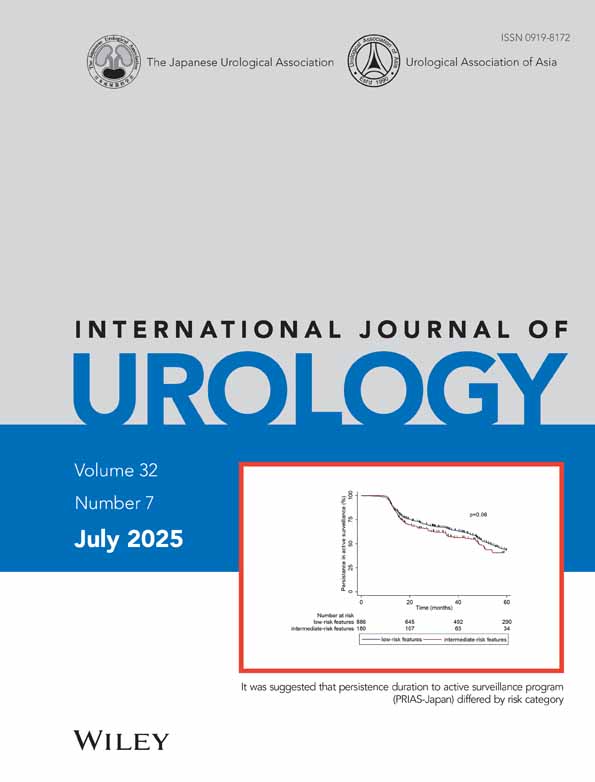An anterior urethral stitch improves urinary incontinence following radical prostatectomy
Abstract
Objective: To determine the effects of an anterior urethral stitch, referred to as an endopelvic anterior urethral stitch (EAUS), in reducing recovery time for post-prostatectomy urinary incontinence.
Methods: The urinary continence recovery time for 24 patients, who received a retropubic radical prostatectomy with the EAUS procedure, was compared to that of a historical control series of 22 patients without EAUS. The EAUS is a simple 2-0 polyglactin stitch placed between the bunched dorsal vein complex and the anterior urethra. This procedure was performed at the time of urethro-vesical anastomosis. Continence recovery time was defined as the day after removal of the urethral catheter when the patient no longer required pads for incontinence.
Results: A significantly shorter time for continence recovery (median 8.5 days) was obtained in EAUS patients compared with that of the control series (median 72 days) (P < 0.0001). Early recovery of continence was observed in 12/24 patients (50%) within 1 week and 18/24 patients (75%) within 1 month in EAUS patients. No adverse effects or complications were observed in the EAUS patients.
Conclusion: A surgical procedure, the EAUS, has been developed that reduces urinary incontinence in patients who have undergone a radical prostatectomy. This procedure is simple and quick and improves recovery of continence without any side-effects.




